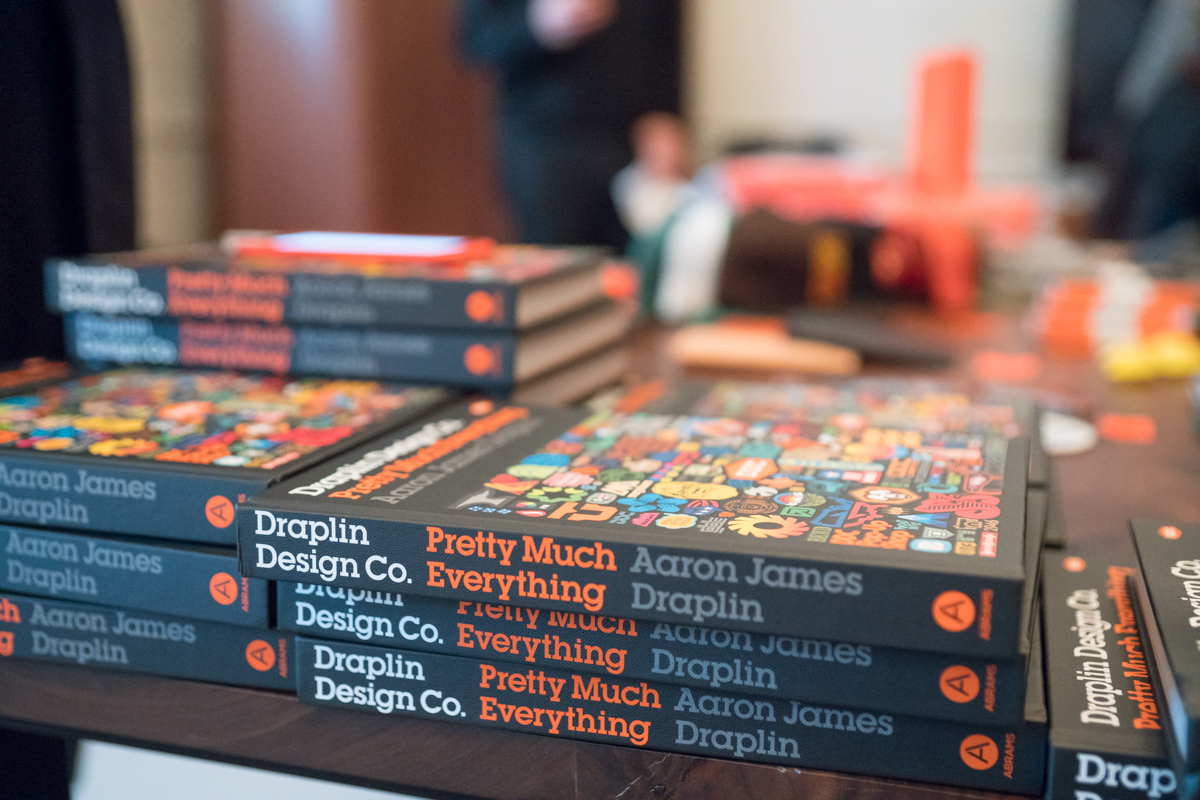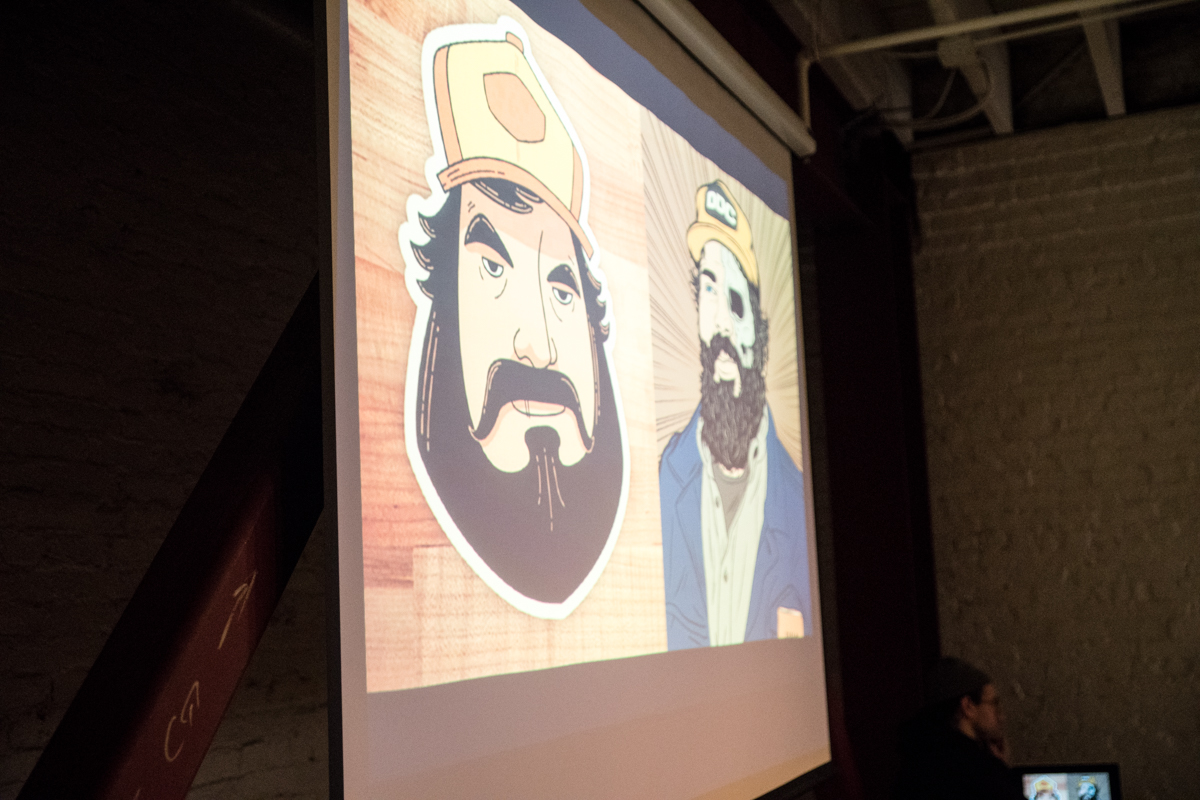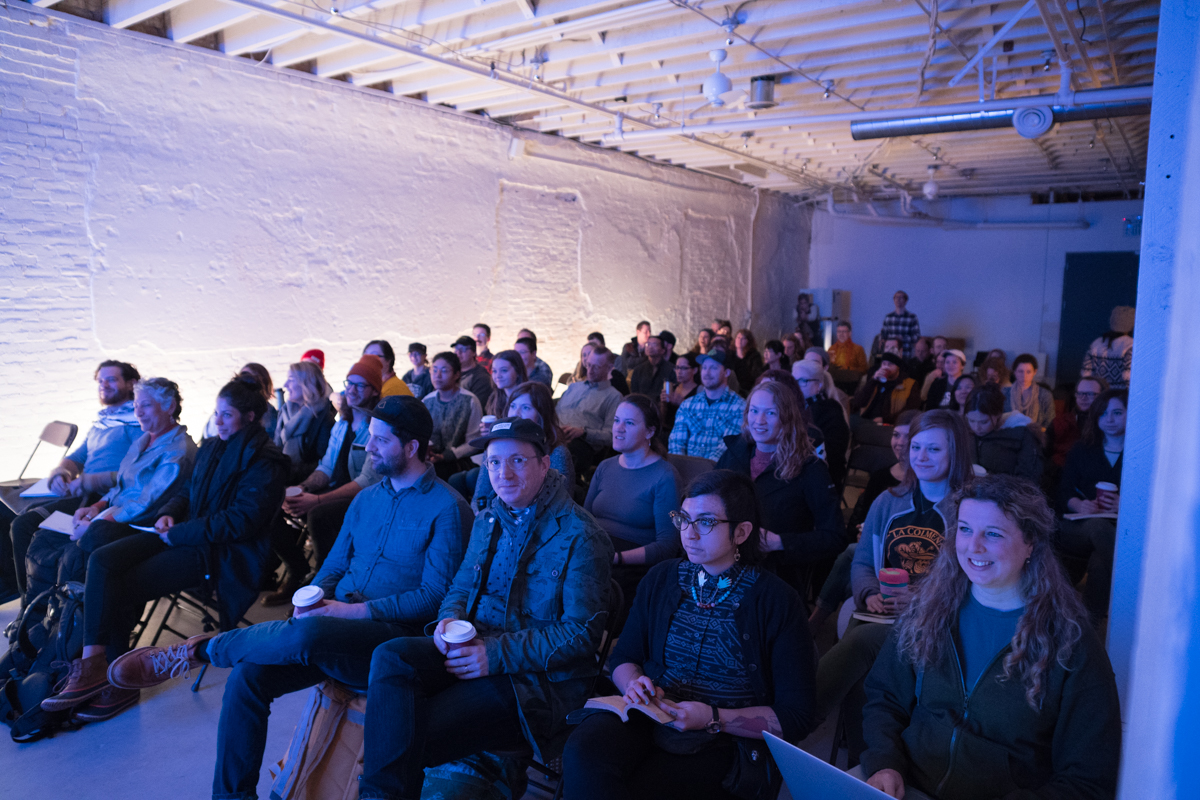On January 20th, at 52 Limited, Aaron Draplin of Draplin Design spoke at AIGA Portland’s Career Tools event series on the topic, “What happens when your career plans go south?”
The purpose of AIGA Career Tools is to give practical information that you can use immediately to improve your company, career, and community. Draplin spent about an hour flirting with this topic and also addressing it head-on. He presented examples from his own career path and dispensed advice on how to attain the kind of success he has enjoyed. While this blog post is not meant to be an exact recount of everything that Draplin shared that day, I’m going to make an attempt to distill the main messages and takeaways for anyone who was unable to make it.
There were two main ideas Draplin asserted which I found to be immediately actionable – they were also good reminders of things which I think we all know in our hearts but are easy to forget:
- Blaze your own path beyond the limitations of your current job.
- Earn creative freedom through discipline, specifically through saving money.

Don’t put all your eggs in one basket.
Blaze your own path beyond the limitations of your current job.
A big way in which designers might find their career plans going south, is when they wake up and discover they worked really hard to get a job which they don’t ultimately like. “So your big job wasn’t all it was cracked up to be. What do you expect – you work at Nike. You’re not there to win design awards, you’re there to make them a lot of cash,” said Draplin.
When you pour all your creative energy into a job, you’re putting all your eggs in one basket. Diversify where you spend your design and creative energy by doing personal projects, and doing free projects for organizations you believe in or which present an opportunity to have fun. Draplin reminded us that ultimately the projects we do for pay are for someone else whose goal (typically) is to make money. If we look to these gigs to feed our soul and further our design career, we are likely to be sorely disappointed. No matter the core values of the organization, their ultimate reason for existing is not to further your personal design career or to provide you with fun projects – these things are your own responsibility.
“Why don’t we soar with the eagles after 5pm? Because people get tired after 5pm and go do Pilates and they don’t do these things,” said Draplin. He encouraged us to actively seek out and pursue the kinds of project we want to be doing on our own time, whether they’re made-up projects that are entirely for our own personal enjoyment, for nonprofits, or for friends’ ventures.
Draplin shared numerous example projects of him doing just that, and many of his personal undertakings have seen considerable traction. He has chronicled these projects in his book, Pretty Much Everything, which in and of itself is an example of a personal project that has seen impressive success. The book started out as a personal project that he wasn’t sure about, and it’s been so successful that it’s now in it’s 3rd printing and he’s sold 4,500 just from his website alone.
Field Notes is another one of these personal project examples. He found he really wanted a little notebook, and decided to make his own. He printed 2,000 of them with a local Portland printer, Pinball Publishing, using his own funds – cash he didn’t need to fund his day-to-day existence. Field Notes are now sold by thousands of retailers nationwide and are a significant source of income for Draplin.


Be your own awesome client.
Earn freedom through discipline, specifically through saving money.
Draplin said about his Field Notes project: “There was no business plan, there was no knife to the throat that it had to succeed – Field Notes could have been a flop and if they were, that’s OK.”
Why? Because Draplin’s other piece of excellent advice was to live lean and save up so that you can afford yourself personal design freedom. When you have money saved up to invest in your own projects, and you don’t have a lot of personal happiness wrapped around their monetary success, they can be a true personal delight. Suddenly, you can be working on the project of your dreams. “It’s just a matter of being smart about it. Iit’s weird how you can manifest these things.”
Draplin shared that central to his creative happiness, is his ability to live lean and save up money – money that he can then use to invest in his own projects. He ballparked his personal living budget at around $33,000/year, which allows him to use excess income to invest in his own career, his own projects, in addition to taking care of his loved ones.
Draplin clearly sees money as a ticket to freedom, which at first seems counter-intuitive but after he explains it, makes perfect sense. When we rely heavily on our job to pay all our bills, we are desperate to keep that job. We are reluctant to leave it, because we need that income. He recommends living lean and having a healthy savings account which can empower you to quit your job if you hate it, and look for something better. Having savings means you can quit anytime, and still fund your life while you either look for a new job or even start your own thing as an independent contractor.
Who knows – one of our personal projects might just turn out to be a viable product which we could sell for additional income. He estimates that his current income is about 70% from his merchandise, 30% from Field Notes alone, and about 10% from client projects. At the very least, we’ll have fun doing it, stay inspired, and have a great portfolio piece.
Sounds like great advice to me. I wonder what my next personal project will be?

Photos by Neil Gravatt